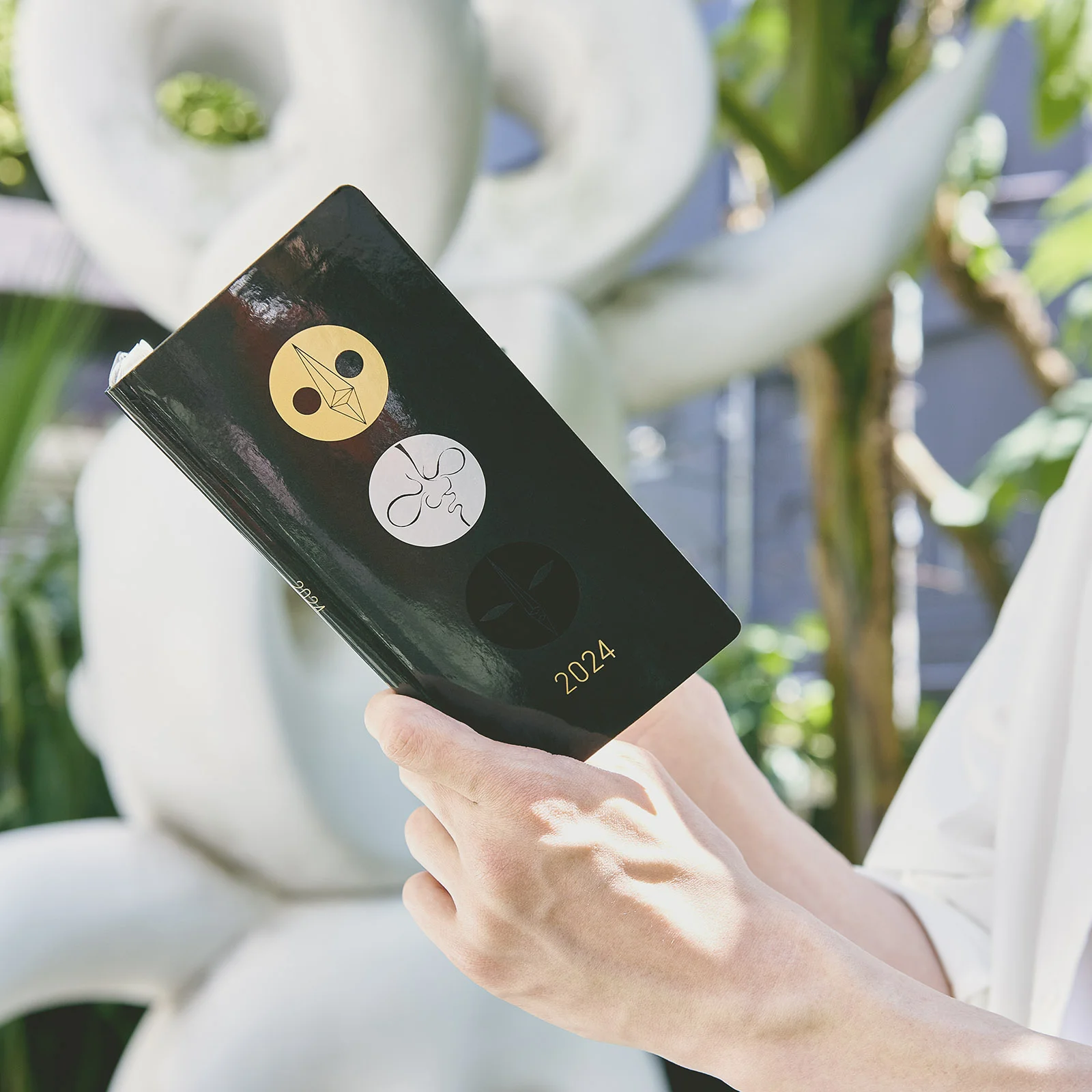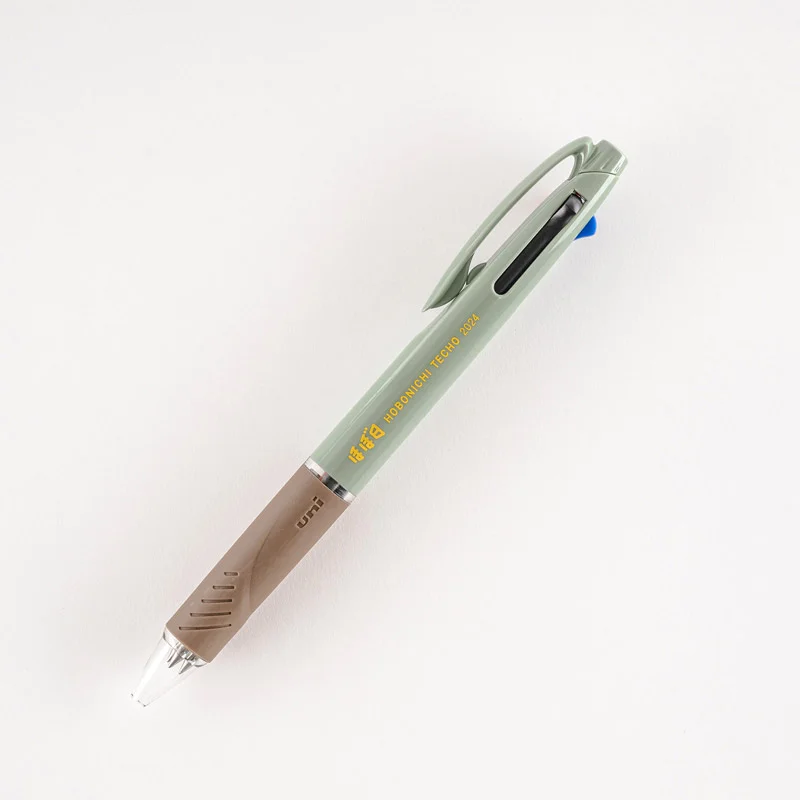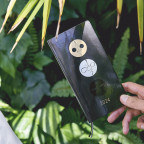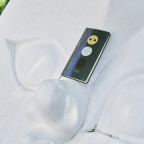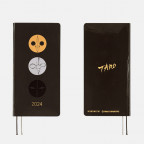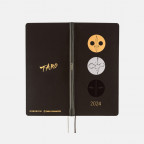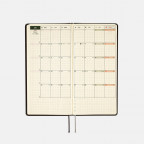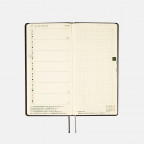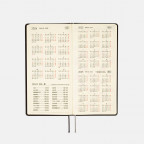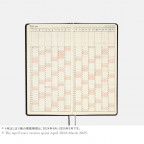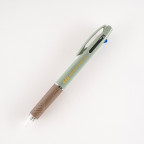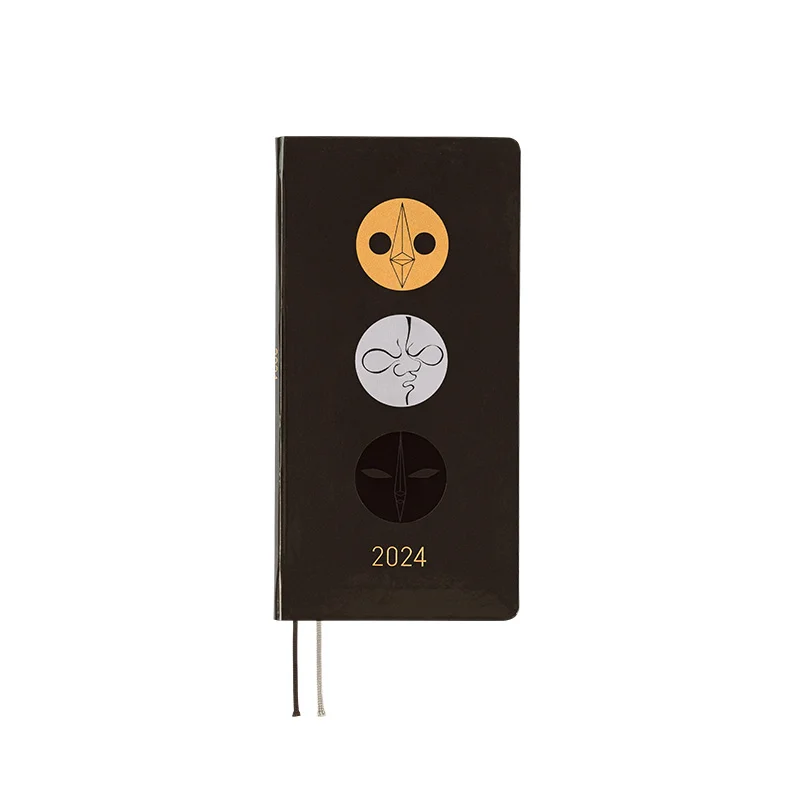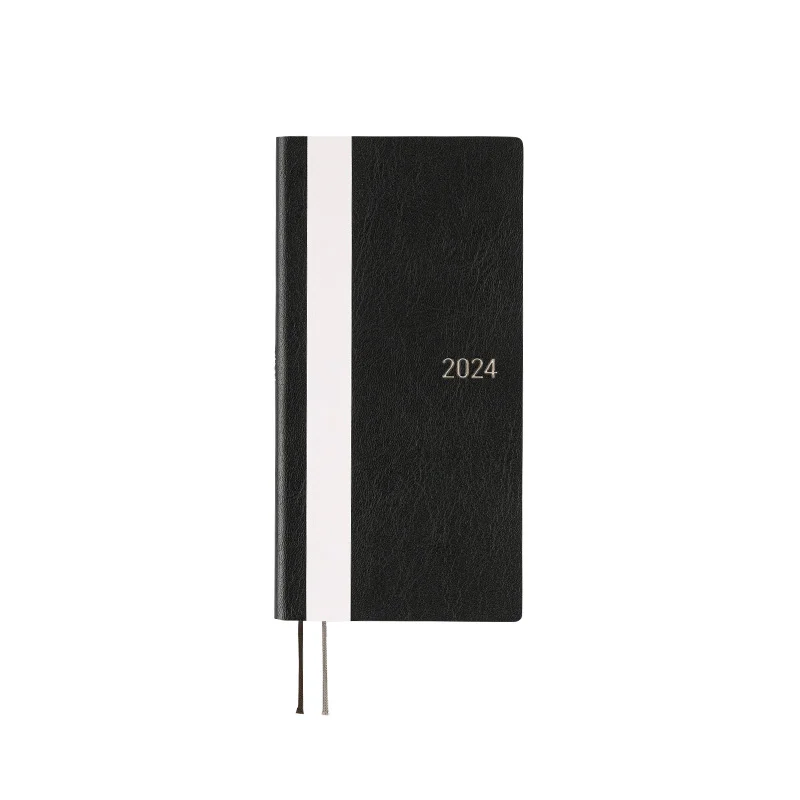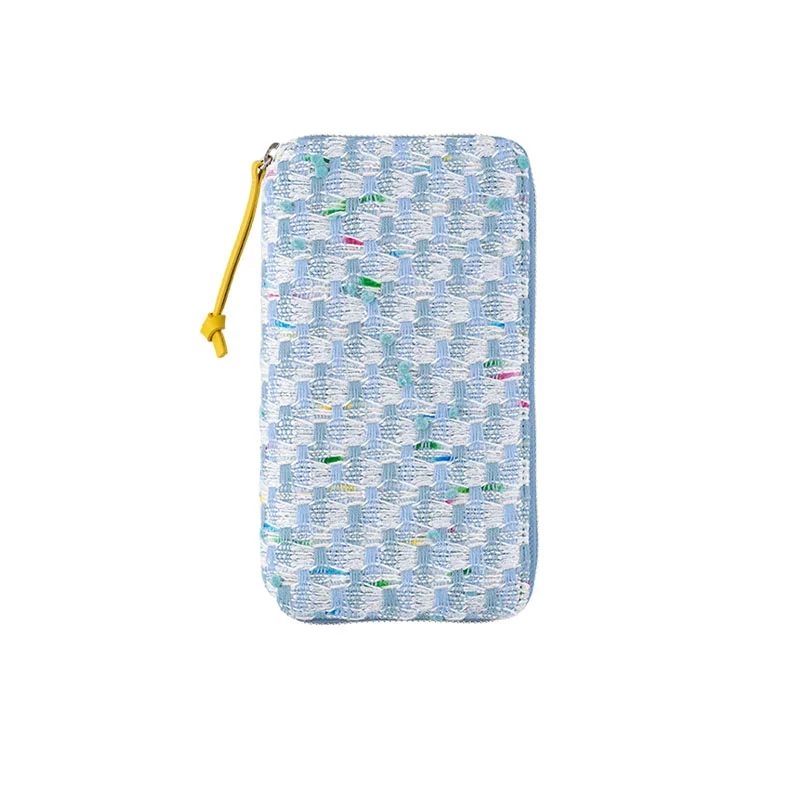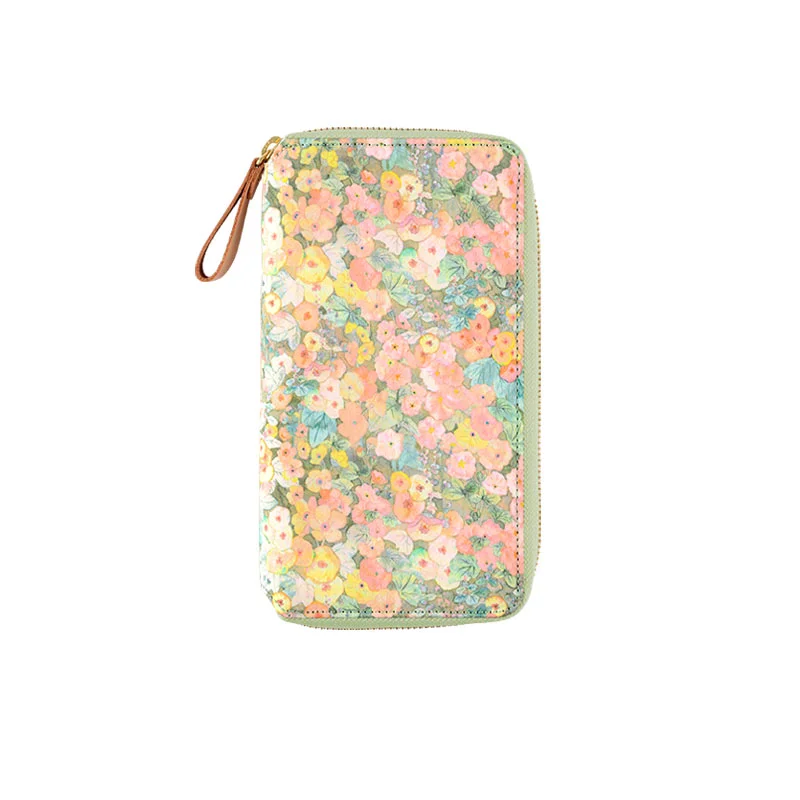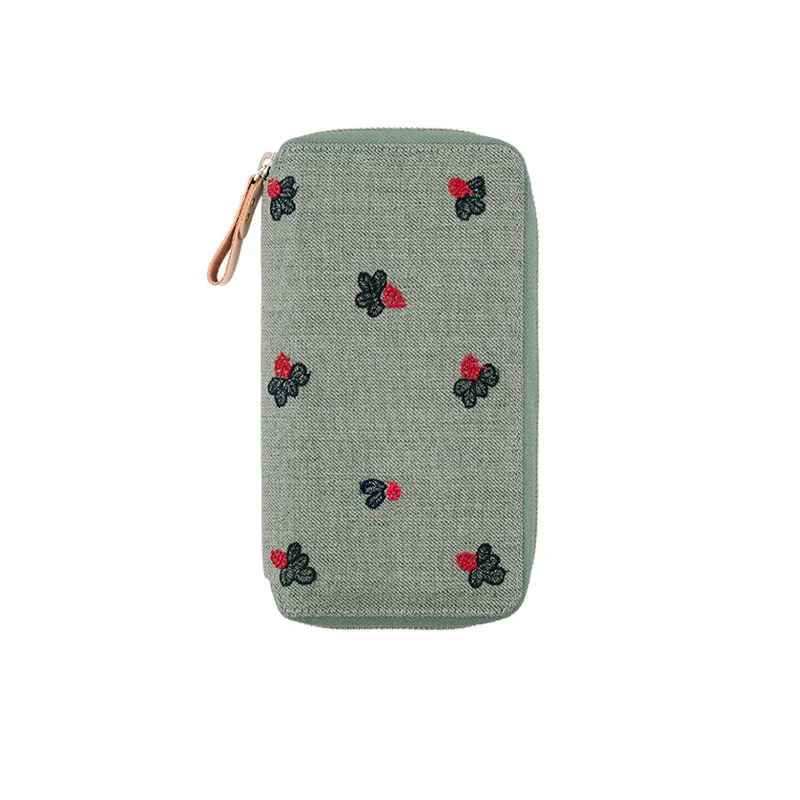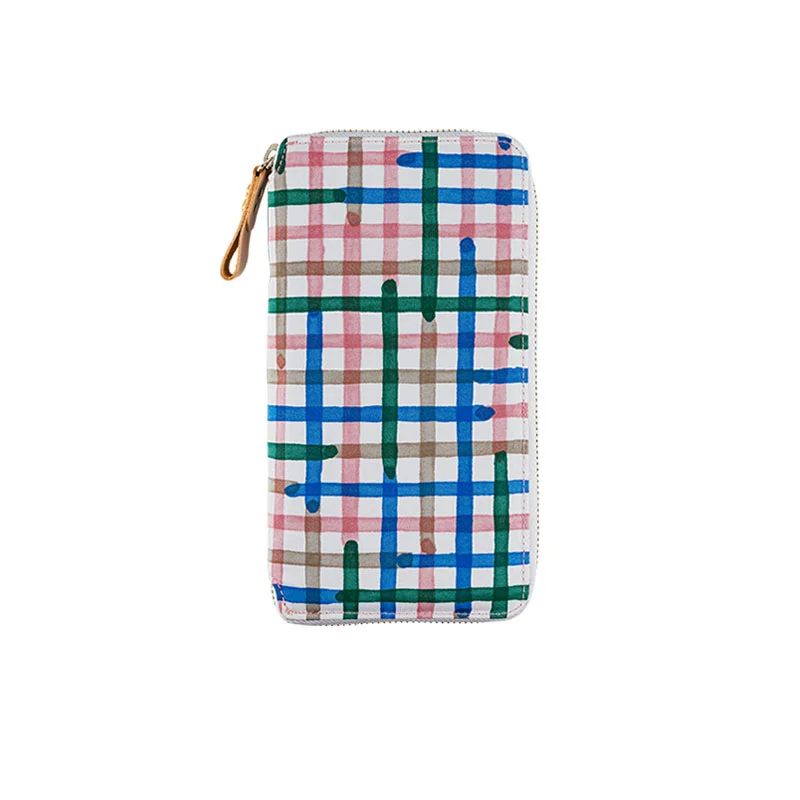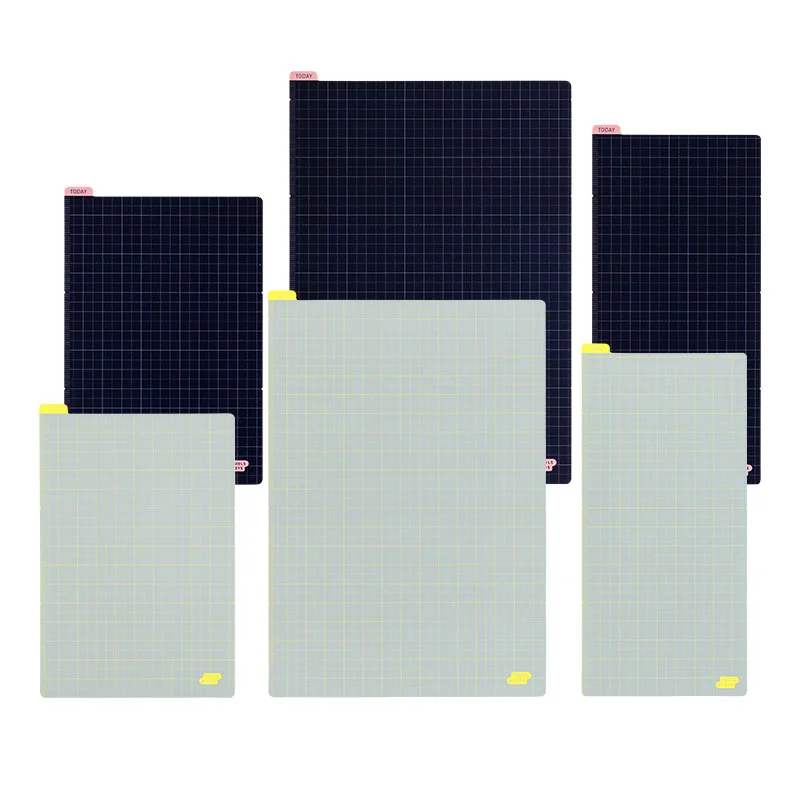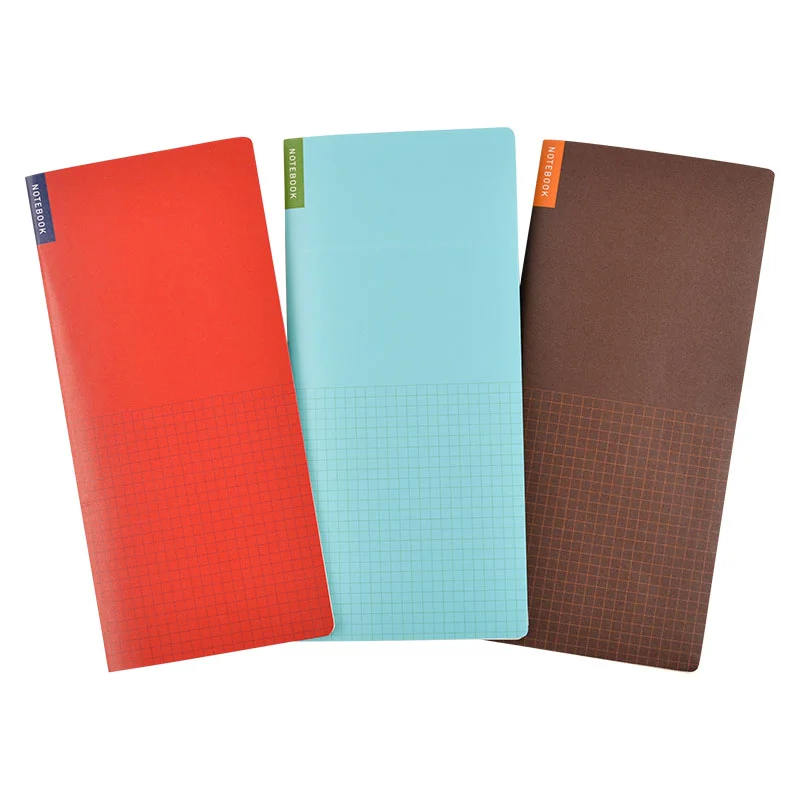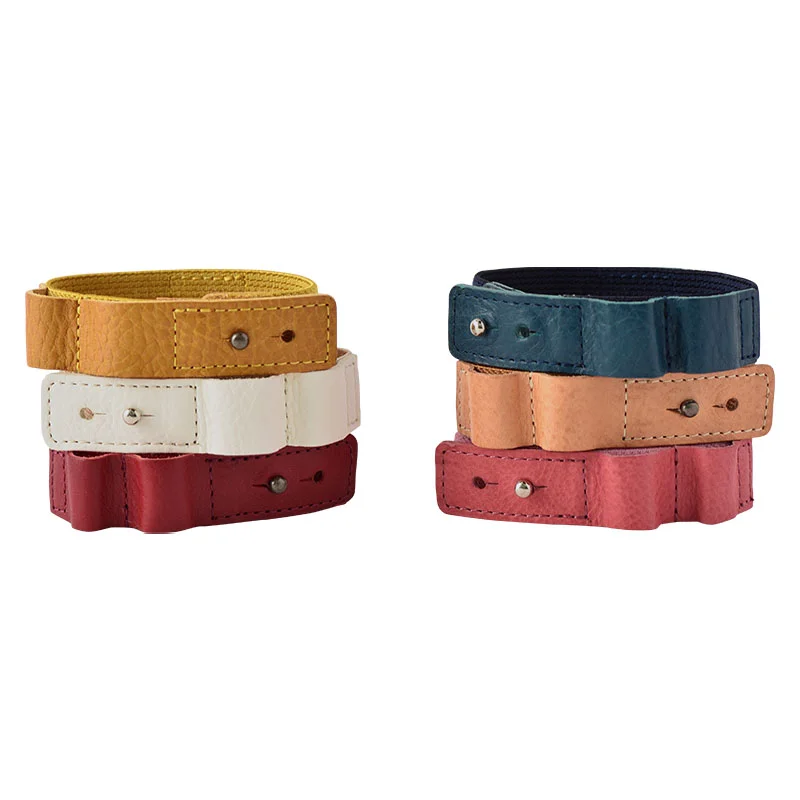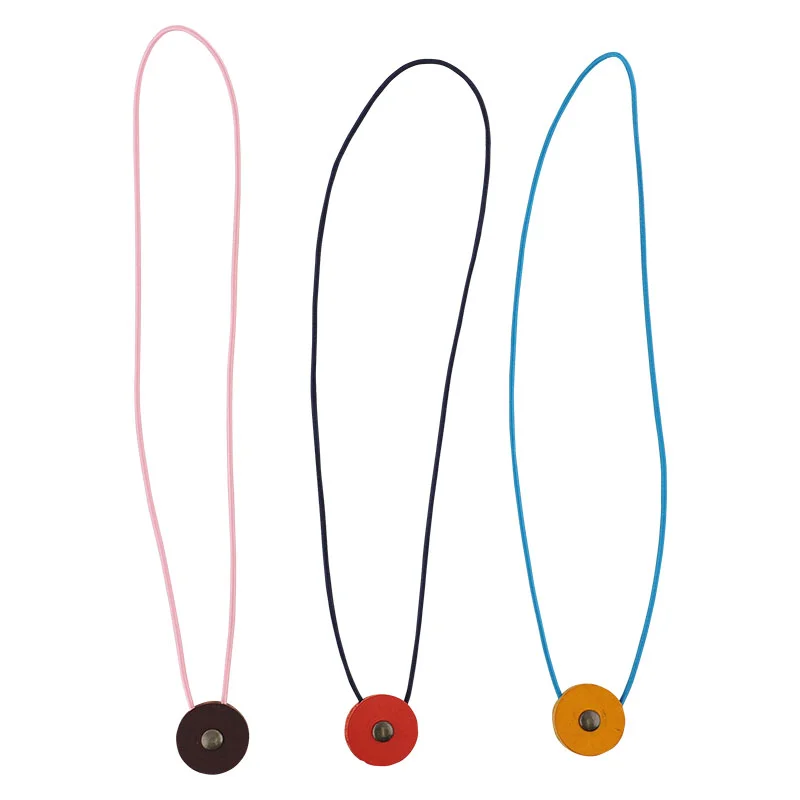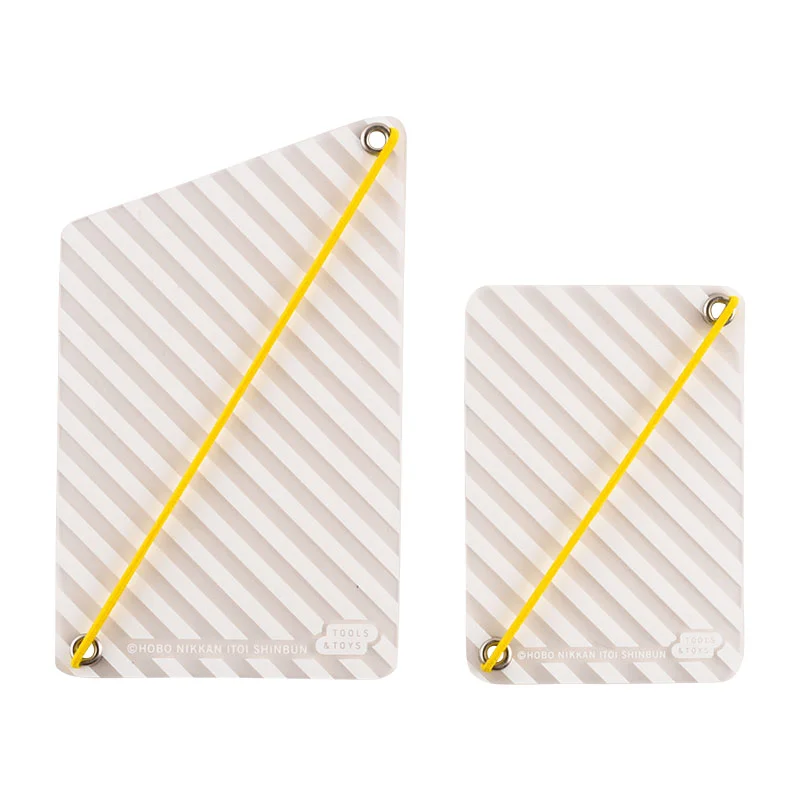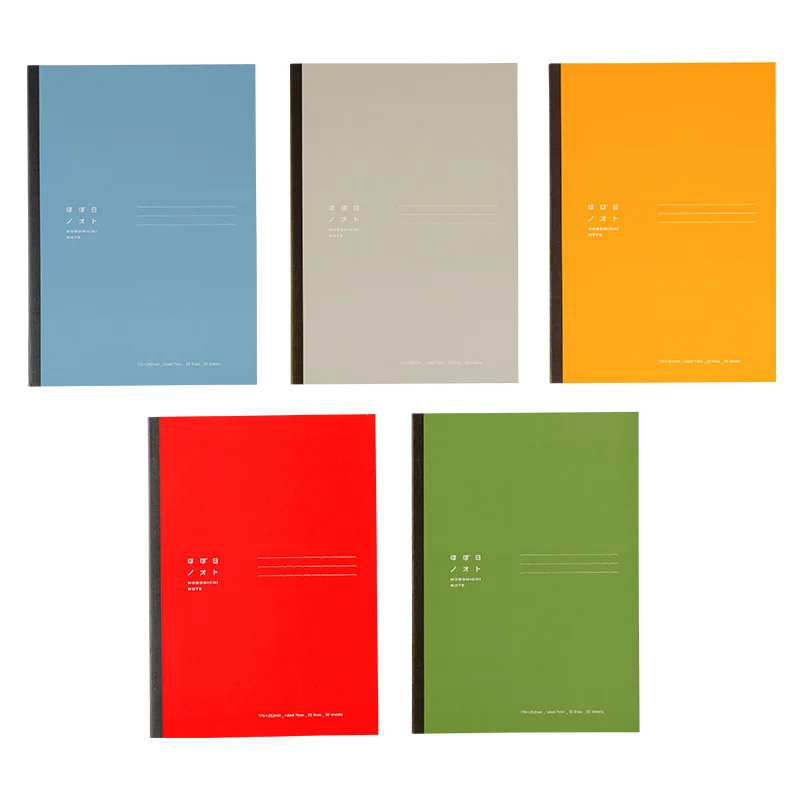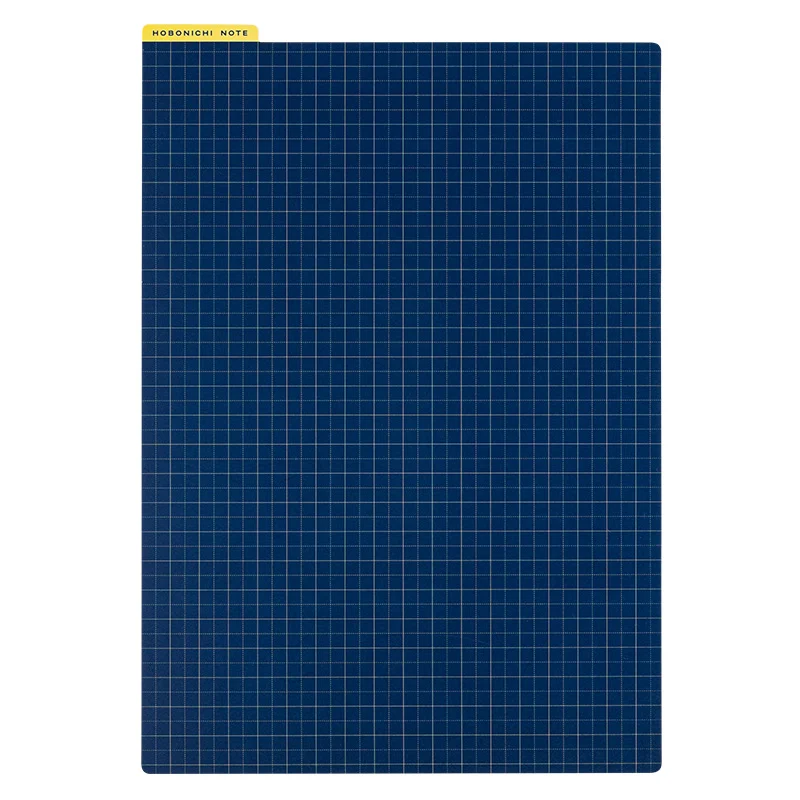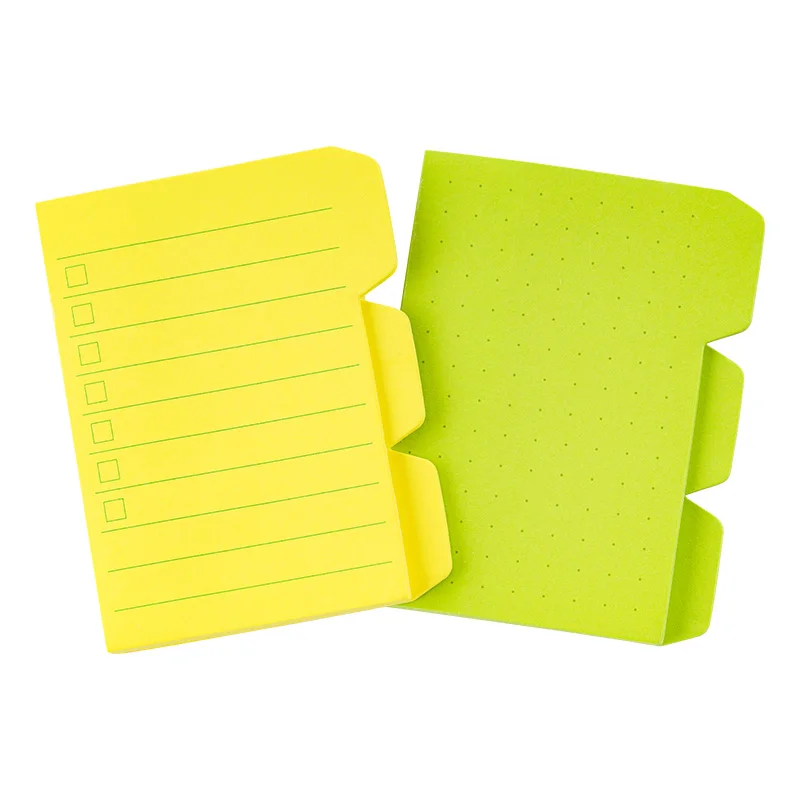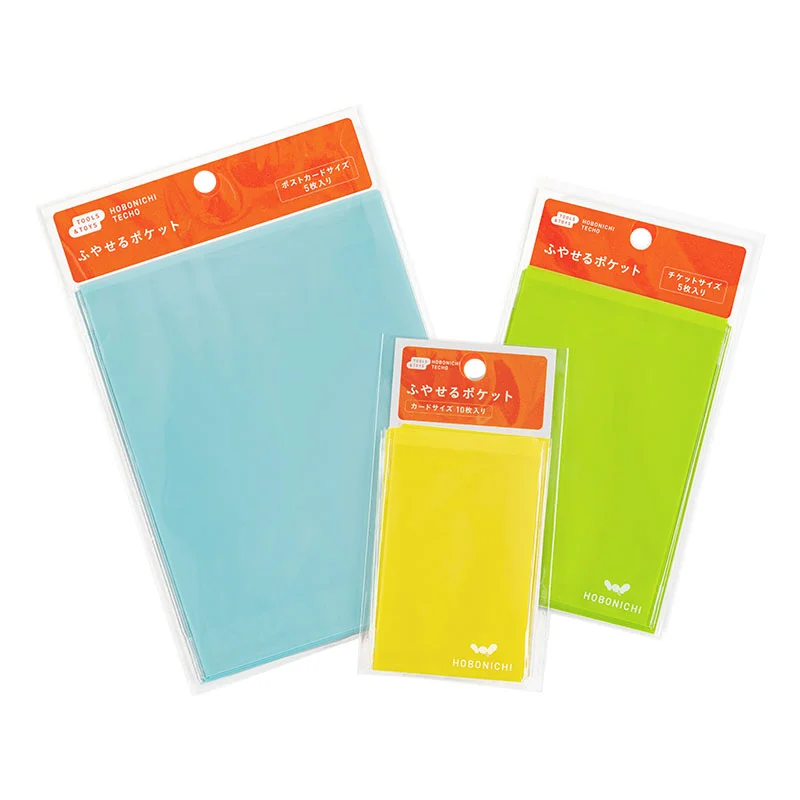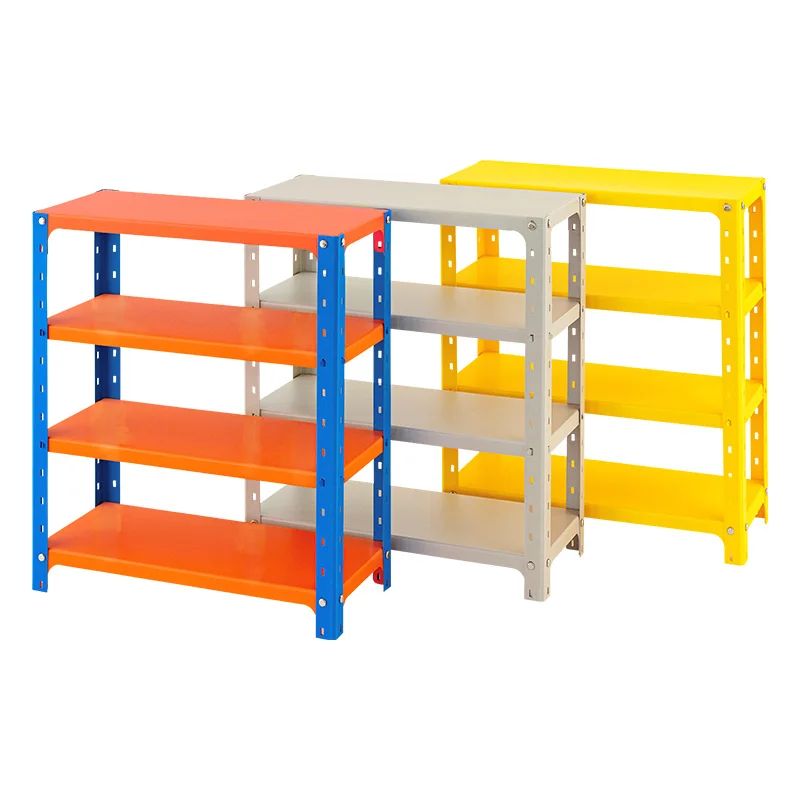Taro OkamotoThree Faces2024 edition / Weeks Hardcover Book / Weekly Horizontal / JPN edition / Apr start / Mon start
- 2024 ver.
The Tower of the Sun monument was erected for the 1970 World’s Fair in Osaka and stands about 70 meters tall. It remains to this day as a powerful presence in the Osaka Expo Park and is one of Taro Okamoto’s most famous works. The tower is regarded as a symbol of the energy of all things generated through the past, present, and future, and also the center of life. There are three faces on the tower: The Golden Mask, which shines at the top of the tower, the Face of the Sun in the center of the tower, and the Black Sun on the back. This Weeks book cover features all three faces lined up.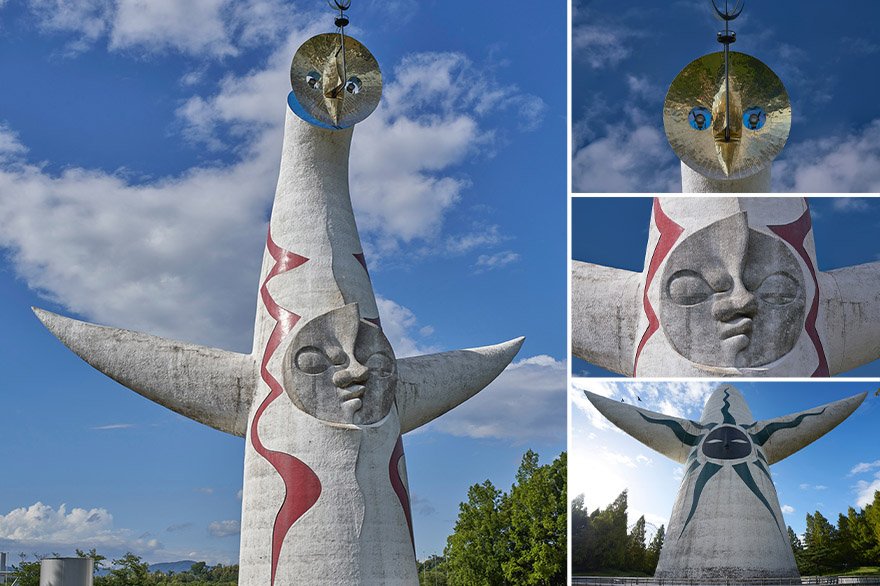
Photo by: Taro Okamoto Memorial Museum
The three faces are debossed and foil-printed in black, gold, and silver.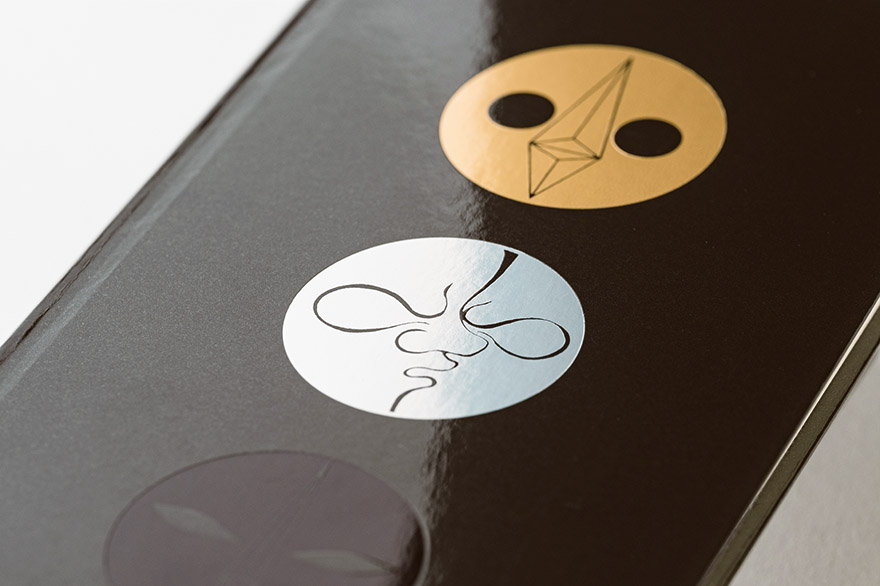
The year 2024 is printed in a sparkling gold.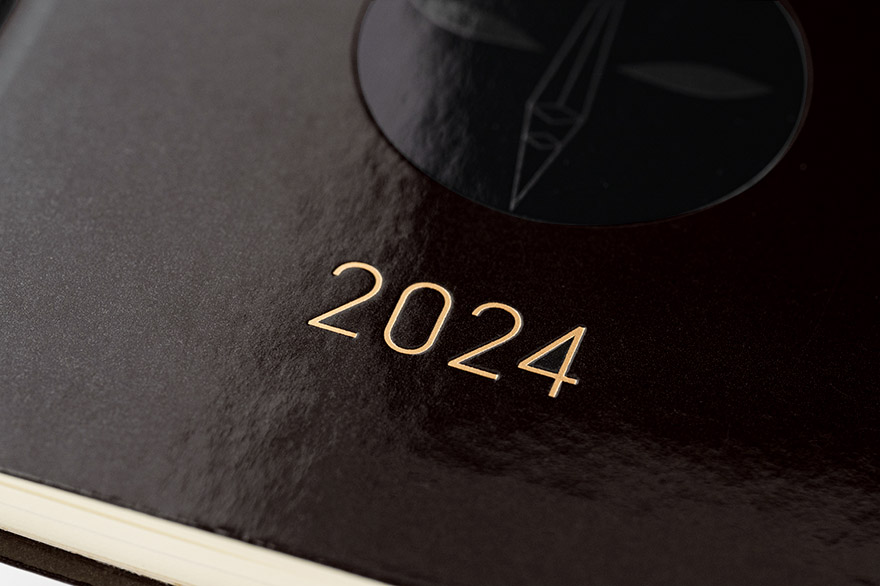
The back cover is also foil-pressed in gold with Taro’s signature.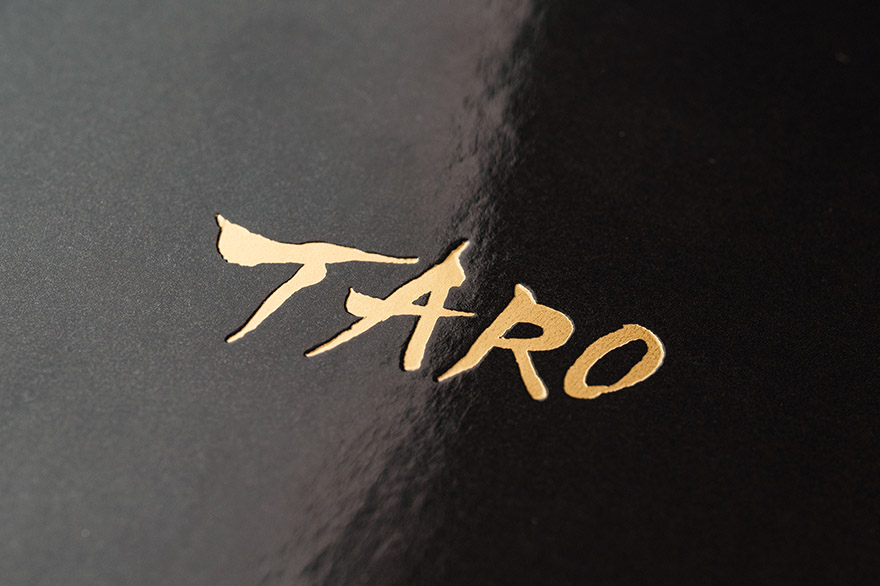
The Golden Mask represents the future, the Face of the Sun represents the present, and the Black Sun represents the past. With the past, present and future all lined up on this Weeks techo, it’s perfect for making into your own unique book of time as you write down things like future plans or events that happened that day.
When you order this Hobonichi Techo Weeks, you’ll receive a clear, adhesive corner pocket you can stick anywhere you like.
From the 2024 April-start version for the Weeks, the book uses thin and light yet durable Tomoe River paper. The paper has supported the Hobonichi Techo for over 20 years with its special characteristics, but it’ll be undergoing an overhaul starting with the 2024 edition techos. The paper is more resistant to bleed through, lighter despite being the same thickness, and has a smoother surface by adjusting the fibers of the paper.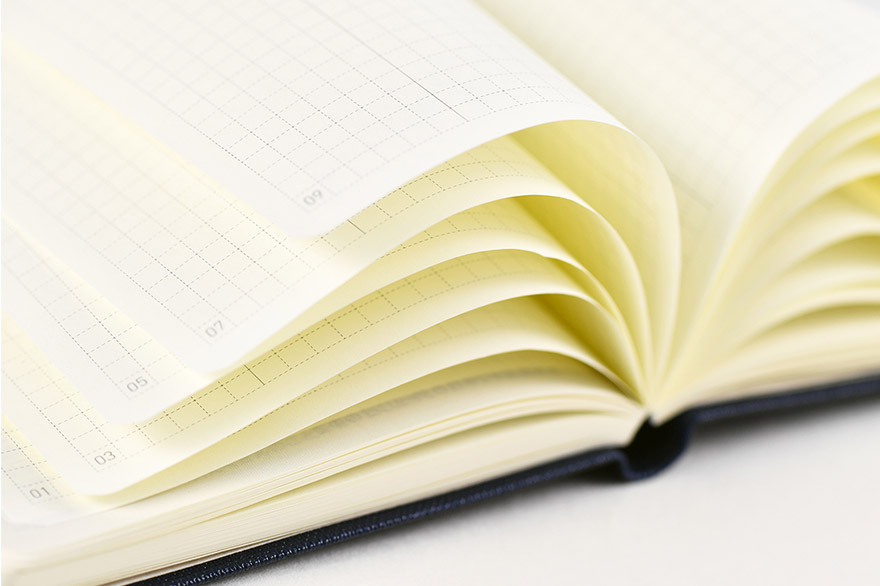
The Weeks book has space for writing in plans or journal entries, and it also has 73 pages of grid paper memo pages in the back. The back of the book contains informational pages, including An Interview with Myself and Seasonal Sweets to Make at Home.
If you’d like storage space or a way to change up the look of your Weeks book, you can customize your book by pairing it with a Weeks cover.
See Weeks cover lineup
About Taro Okamoto
Taro Okamoto moved to Paris in 1929 at 18, where he participated in core organizations of the abstract art movement, and also gained invaluable experience by immersing himself in ethnographic studies at the University of Paris. After returning to Japan in 1940, he developed his avant-garde art in postwar Japan and produced a series of controversial artworks. In 1951, Okamoto first encountered Jomon pottery. He traveled throughout Japan in the late 1950s and created a number of photographs and essays. He designed the Tower of the Sun for the 1970 Osaka World Expo and became a well-known national figure. Even after his death in 1996, he continues to have a great influence on the younger generation.
Staff List
- Photographer
- Styled Images: Eri Morikawa / Product Detail: Hiroyuki Oe
- Stylist
- Noriko Miyazaki
- Makeup & Hair
- Moe Hikida
- Model
- HAO (TOMORROW TOKYO)
![]()
- Taro OkamotoThree Faces2024 edition / Weeks Hardcover Book / Weekly Horizontal / JPN edition / Apr start / Mon start
- ¥2,970(incl. tax)
Recommended Techo Books and Covers
Recommended Stationery and Accessories
![]()
- ¥330 - ¥440
![]()
- ¥660
![]()
- ¥1,980
![]()
- ¥660
![]()
- ¥495 - ¥605
![]()
- ¥297 - ¥1,485
![]()
- ¥660
![]()
- ¥440
![]()
- ¥330 - ¥370
![]()
- ¥4,800
Compatible Techo Covers
Specifications
Size H: 188 x W: 94 x T: 10 mm / H: 7.4" x W: 3.7" x T: 0.4"
*Specifications may vary slightlyWeight Approx. 135 g Main material Glossy paper (PP coated) / Paper - Weeks Book (Japanese / April Start)
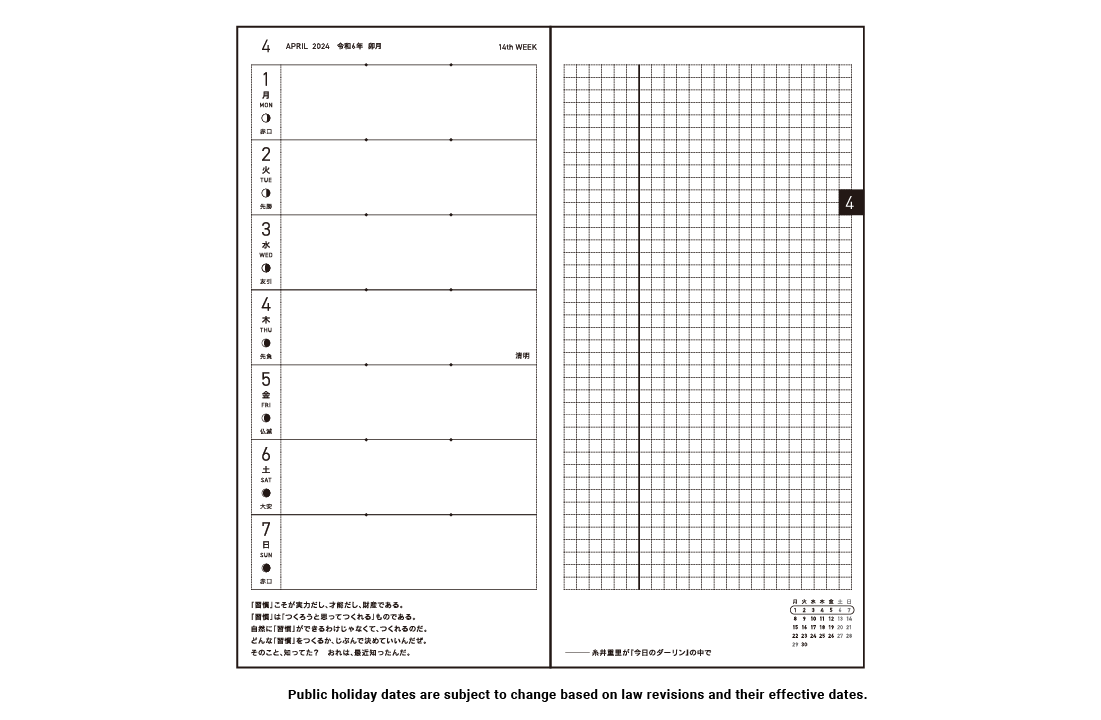
Language Japanese Pages 240 pages Paper Type / Binding Thin, light Tomoe River paper resistant to bleeding and designed for planners / Stitch-binding Graph Paper Size 3.55 mm Start of Week Monday-start week Yearly Calendar 2023, 2024, 2025 Yearly Index Apr. 2024 - Mar. 2025 (2 pages) Monthly Calendar Mar. 2024 - Apr. 2025 (28 pages) Daily Quotes One per week (Japanese) Weekly Pages Feb. 26, 2024 - Apr. 6, 2025 (116 pages)
*All weekly pages include quotes.Graph Paper 73 pages Bonus Pages Shorthand Note-Taking / Using Common Items to Measure Size / My 100 / An Interview with Myself / Seasonal Sweets to Make at Home / Solar Terms / Emergency Preparedness / Age Table / Conversion Chart / Getting the most of Hobonichi / Contact List / Personal Notes Listed Information Week of the year / Rokuyo (traditional Japanese calendar) / Solar terms / Japanese holidays / Moon phase (weekly pages include every phase, monthly calendars only include full and new moon) Other See the Exploring Each Type page for more details
Please Read Before You Buy
In order to provide you with the most satisfaction for your product, we've compiled a list of warnings, potential issues, and tips to keep in mind for this particular product. Please be sure to read this information carefully before placing your order.
- Test fountain pens before regular use
The Hobonichi Techo's Tomoe River paper is designed to prevent bleed-through, but some fountain pens and water-based ink pens are not compatible with this paper. When switching to a new pen, we recommend testing the pen somewhere in the book, such as the back memo pages, to see if the ink bleeds through or takes an especially long time to dry.
- Cover corners are slightly bumpy and shiny
The corners of the cover contain light traces of press marks, shines, and lumps. This is an unavoidable part of the manufacturing process.
- Coloring may stain other objects
The dye in the cover may stain other objects if it rubs against or sticks to them, especially if the cover is wet from water or sweat from your hands. Please store with care.
- Imprinted year numbers may peel
The numbers of the year are stamped onto the cover in metallic or other colored leaf, so strong rubbing or everyday use may cause the numbers to peel off.
- Avoid storing in hot and humid places
Please avoid storing your product in hot, humid places or placing it atop other objects for long periods of time as this may result in lower quality and color stains.
- Avoid using with Clear Cover
This cover uses thicker materials than usual, so it may not fit. Forcing it into a Clear Cover may damage the product.
User recommendations
If you’ve used any of these products, we welcome your notes on what you like about them or what led you to buy them so we can share it with customers who are currently considering these products. We’d also love to welcome comments from customers who purchased their techo outside the Hobonichi Store or received their book as a gift.
